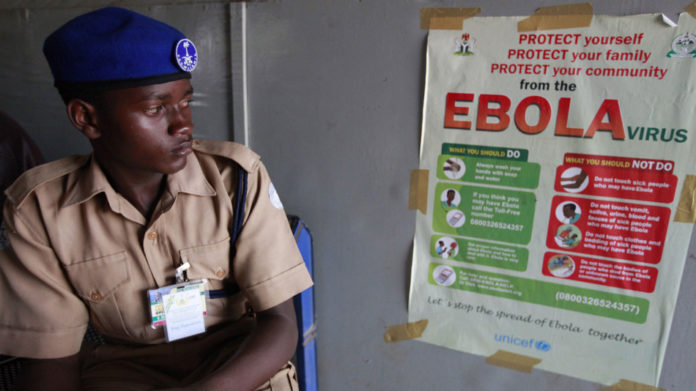New Study Predicts 21,000 Ebola Cases by November

LONDON — New estimates from the World Health Organization warn the number of Ebola cases could hit 21,000 in six weeks unless efforts to curb the outbreak are ramped up.
Since the first cases were reported six months ago, the tally of cases in West Africa has reached an estimated 5,800 illnesses. WHO officials say cases are continuing to increase exponentially and Ebola could sicken people for years to come without better control measures.
In recent weeks, health officials worldwide have stepped up efforts to provide aid but the virus is still spreading. There aren’t enough hospital beds, health workers or even soap and water in the hardest-hit West African countries: Guinea, Sierra Leone and Liberia.
Last week, the U.S. announced it would build more than a dozen medical centers in Liberia and send 3,000 troops to help. Britain and France have also pledged to build treatment centers in Sierra Leone and Guinea and the World Bank and UNICEF have sent more than $1 million worth of supplies to the region.
“We’re beginning to see some signs in the response that gives us hope this increase in cases won’t happen,” said Christopher Dye, WHO’s director of strategy and study co-author, who acknowledged the predictions come with a lot of uncertainties.
“This is a bit like weather forecasting. We can do it a few days in advance, but looking a few weeks or months ahead is very difficult.”
Opening of Island clinic, new #Ebola treatment unit in #Monrovia, #Liberia, with 100 beds http://t.co/itxmkesEUB pic.twitter.com/cCBv9b4V64
— WHO (@WHO) September 22, 2014
They also calculated the death rate to be about 70 percent among hospitalized patients but noted many Ebola cases were only identified after they died. So far, about 2,800 deaths have been attributed to Ebola. Dye said there was no proof Ebola was more infectious or deadly than in previous outbreaks.
The new analysis was published online Tuesday by the New England Journal of Medicine — six months after the first infections were reported on March 23.
WHO is just one of the groups that have attempted to calculate the epidemic’s future toll.
On Tuesday, the U.S. Centers for Disease Control and Prevention is expected to release its own predictions for only Liberia and Sierra Leone — the two West African countries that recently have shown the steadiest and most alarming spread of cases.
The CDC calculations are based, in part, on assumptions that cases have been dramatically underreported. Other projections haven’t made the same kind of attempt to quantify illnesses that may have been missed in official counts.
CDC scientists conclude there may be as many as 21,000 reported and unreported cases in just those two countries as soon as the end of this month, according to a draft version of the report obtained by The Associated Press. They also predict that the two countries could have a staggering 550,000 to 1.4 million cases by late January.
The agency’s numbers seem “somewhat pessimistic” and do not account for infection control efforts already underway, said Dr. Richard Wenzel, a Virginia Commonwealth University scientist who formerly led the International Society for Infectious Diseases.
Other outside experts questioned WHO’s projections and said Ebola’s spread would ultimately be slowed not only by containment measures but by changes in people’s behavior.
“It’s a big assumption that nothing will change in the current outbreak response,” said Dr. Armand Sprecher, an infectious diseases specialist at Doctors Without Borders.
“Ebola outbreaks usually end when people stop touching the sick,” he said. “The outbreak is not going to end tomorrow but there are things we can do to reduce the case count.”
Local health officials have launched campaigns to educate people about the symptoms of Ebola and not to touch the sick or the dead. Previous Ebola outbreaks have been in other areas of Africa; this is the first to hit West Africa.
Sprecher was also unconvinced Ebola could continue causing cases for years and said diseases that persist in the environment usually undergo significant changes to become less deadly or transmissible.
Dye and colleagues wrote they expected the numbers of cases and deaths from Ebola to continue rising from hundreds to thousands of cases per week in the coming months — and reach 21,000 by early November. He said it was worrisome that new cases were popping up in areas that hadn’t previously reported Ebola, like in parts of Guinea.
“The picture is too unclear at the moment,” he said, noting the outbreak is continuing to double in size about every three weeks.
Scientists said the response to Ebola in the next few months would be crucial.
“The window for controlling this outbreak is closing,” said Adam Kucharski, a research fellow in infectious disease epidemiology at the London School of Hygiene and Tropical Medicine.
Have something to add to this story? Share it in the comments.
